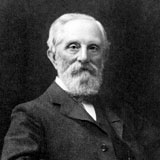What happened that day?
See historic events for any day of the year by entering the date below. Why not try your birthday?
Kiwi of the Week
Today in History

1879 Parihaka ploughing campaign begins
Under the leadership of Te Whiti and Tohu Kakahi, Parihaka Maori embarked upon a ploughing campaign to protest against European settlement on confiscated Maori land.
Located half way between Mount Taranaki and the Tasman Sea, Parihaka became the centre of a peaceful resistance movement from the mid-1860s. The movement involved not only other Taranaki tribes, but Maori from around the country. The confiscation of Taranaki Maori land prompted Te Whiti-o-Rongomai and Tohu Kakahi to develop a campaign to resist European settlement on confiscated land.
This campaign used non-violent methods. In 1879 the government started surveying confiscated land on the Waimate plain. Te Whiti's followers disrupted these surveys by ploughing and fencing land occupied by settlers. Many were arrested and held without trial in the South Island. The protests continued and more took part. Finally in November 1881, the government sent a force of over 1500 troops to Parihaka. Its inhabitants were arrested or driven away. Te Whiti and Tohu were imprisoned until 1883, and the village was later demolished. Despite the absence of its leaders Parihaka was rebuilt and the ploughing campaigns − and arrests without trial of protestors − continued into the 1890s.
Image reference: Puke Ariki














